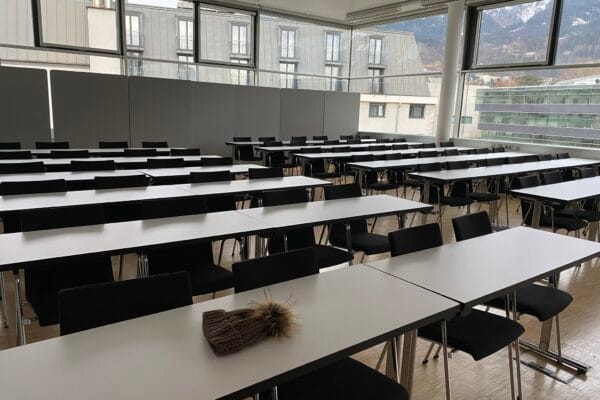
NAME:
MCI - Aula 301
BUILDING:
Management Center Innsbruck
FLOOR:
3
TYPE:
Lecture Room
CAPACITY:
66
ACCESS:
Only Participants
EQUIPMENT:
Blackboard, Beamer, Flipchart, PC, Sound System, WLAN (Eduroam), Handicapped Accessible
Zooplankton species in high alpine lakes face harsh conditions in extreme environments, with low productivity and short ice-free periods. Due to warming in alpine regions these hostile environments are rapidly changing, with earlier ice out, increasing water temperatures, and potential changes in productivity and accessibility. This has the possibility to both create habitats more amenable to lowland zooplankton species and to provide more opportunities for lowland species to colonize these habitats, leading to alternate species composition in the lakes. Within a transdisciplinary project, potential barriers to colonization (competitive exclusion, harsh environments), as well as the concept of species sorting within the zooplankton community of the lakes of the National Park Hohe Tauern, Austria, have been investigated, with the following hypotheses: 1. When large zooplankton species are already present in a lake, they can preclude invasion by new lowland species through competitive exclusion. 2. The hostile environment (low temperature and productivity, high turbidity) of some high alpine lakes is limiting the colonization success of invading species. 3. Species sorting occurs, in that the species or clones found in a lake are those best adapted to the habitat in which they were found. Based on the results of the long-term monitoring of 18 lakes of the National Park Hohe Tauern, Austria, model lakes were chosen and the water and species from these lakes used to run experiments in the lab under controlled conditions. The results of the first experiments testing our hypotheses will be presented.

We and use cookies and other tracking technologies to improve your experience on our website. We may store and/or access information on a device and process personal data, such as your IP address and browsing data, for personalised advertising and content, advertising and content measurement, audience research and services development. Additionally, we may utilize precise geolocation data and identification through device scanning.
Please note that your consent will be valid across all our subdomains. You can change or withdraw your consent at any time by clicking the “Consent Preferences” button at the bottom of your screen. We respect your choices and are committed to providing you with a transparent and secure browsing experience.